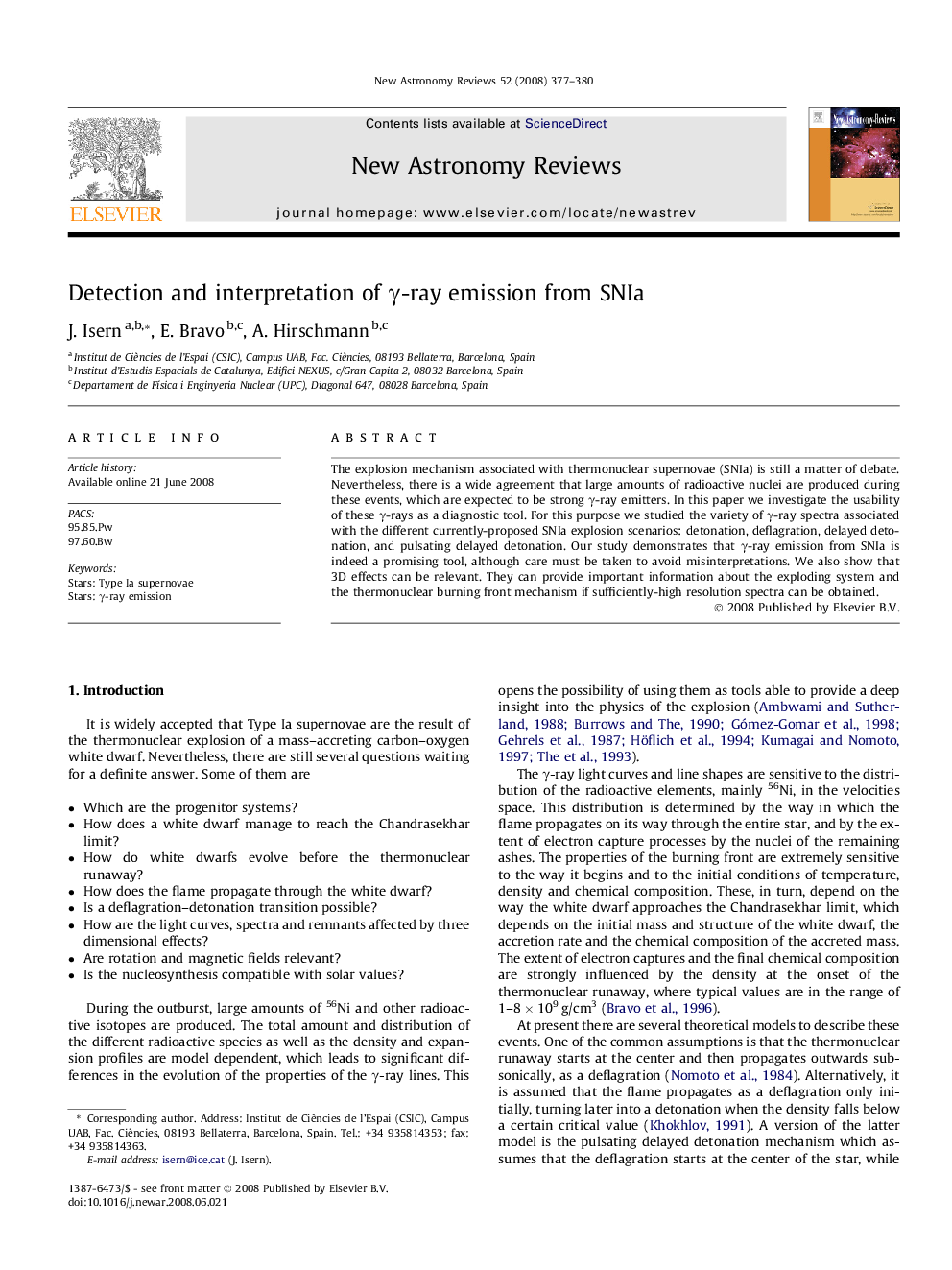| Article ID | Journal | Published Year | Pages | File Type |
|---|---|---|---|---|
| 1780114 | New Astronomy Reviews | 2008 | 4 Pages |
The explosion mechanism associated with thermonuclear supernovae (SNIa) is still a matter of debate. Nevertheless, there is a wide agreement that large amounts of radioactive nuclei are produced during these events, which are expected to be strong γ-ray emitters. In this paper we investigate the usability of these γ-rays as a diagnostic tool. For this purpose we studied the variety of γ-ray spectra associated with the different currently-proposed SNIa explosion scenarios: detonation, deflagration, delayed detonation, and pulsating delayed detonation. Our study demonstrates that γ-ray emission from SNIa is indeed a promising tool, although care must be taken to avoid misinterpretations. We also show that 3D effects can be relevant. They can provide important information about the exploding system and the thermonuclear burning front mechanism if sufficiently-high resolution spectra can be obtained.
